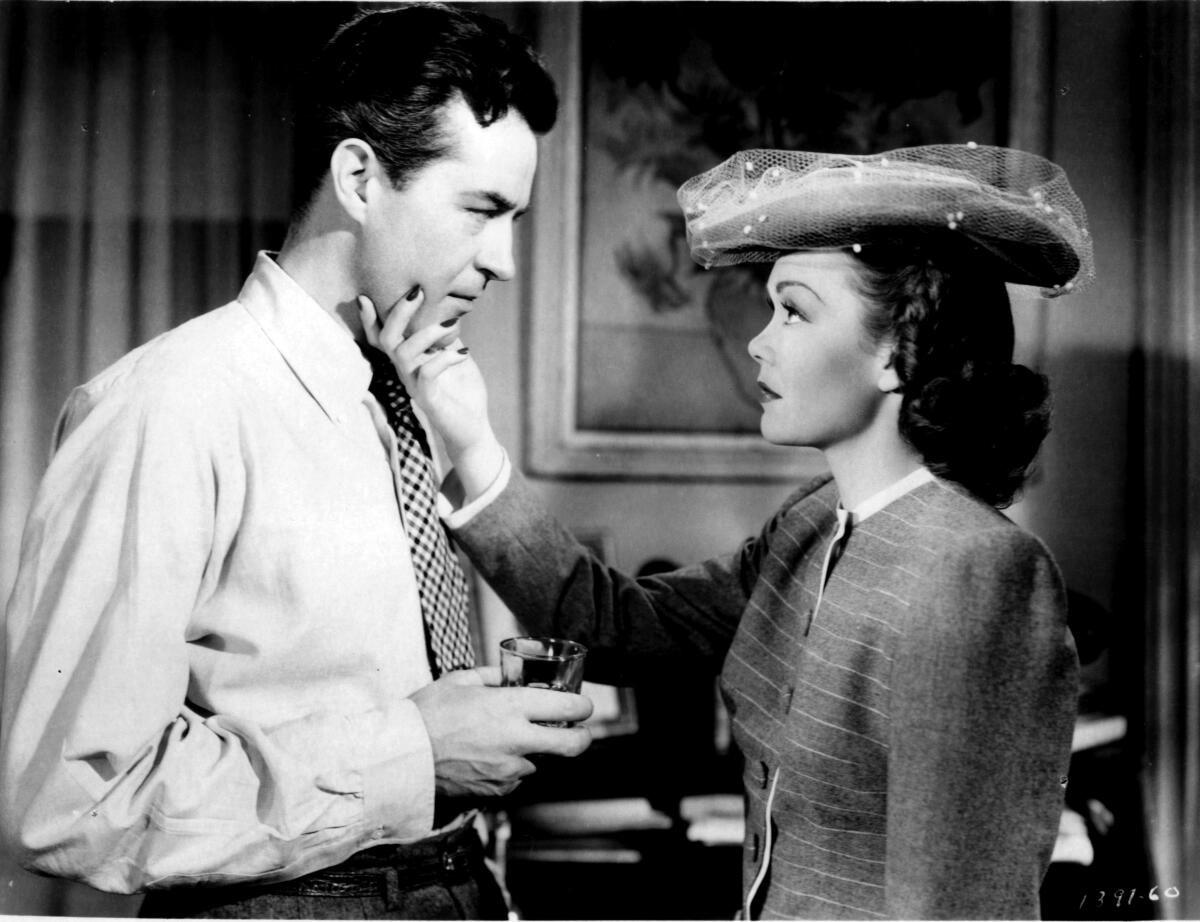From the Archives: ‘Lost Weekend’ violent, stark study of alcoholic

- Share via
The “curse of drink” was never more vividly dealt with than in “The Lost Weekend,” exhibited at the Paramounts in Hollywood and downtown. It is a modern version of the old-time thriller type of melodrama about the evils of over-imbibing, more streamlined and scientific than its predecessors but still replete with “the horrors.”
It will probably either make you take a drink to forget it, or else quit altogether. It just depends on how allergic you become to its intensities, which range through the scale of alcoholism clear up to the DTs. And wow, the shudders that the final all-too-vivid scene with the bat and the mouse are likely to induce!
One can’t treat this picture too lightly, though the reactions it arouses are bound to be variable. Laughs will doubtless be spurred by some of the more sensational yet pitiful episodes, like the one about the patient who sees imaginary beetles in the psychopathic ward.
Some of the more mischievous audience members hissed an early incident when a bottle of whiskey was dumped into the wash basin.
Arouses interest
There will be great divergence in the responses to and the viewpoints on this picture, but I am under the impression from the large opening-day audiences that it will arouse plenty of popular interest.
Except for a perhaps unavoidable overstressing, the picture is excellently made. The overstressing is due to the continual reiteration of the main theme.
In his depiction of Don Birnam, the central character, Ray Milland has to emphasize without letup the addiction to alcohol. What there is to his delineation apart from this has to be achieved mainly through cutbacks.
Even then one cannot, in appraising the picture, feel that the inherent likableness of Birnam is anywhere fully brought out. He is a rather boorish individual when he is sober. He is a maniac in his cups.
Fine portrayal
Yet Milland himself must be given all due credit for a performance that by its sheer force will probably win the Academy Award. He arouses a certain sympathy even under the most adverse circumstances. He will be better understood by readers of the book than those who are unfamiliar with the Charles Jackson novel.
Other performances are in a potent realm, and time and again save the crude presentation of the subject. It is crude undeniably, despite the competency of the Charles Brackett and Billy Wilder team responsible for writing, production and direction. The printed page necessarily permitted more highlights; the picture is stark and violent.
Efficient support
But the work of Jane Wyman, Phillip Terry, Howard Da Silva and Doris Dowling consistently imbues scenes with a glow, because of their earnestness and sincerity. Da Silva and Miss Dowling, in their secondary roles: are assured of receiving much special praise. Frank Faylen, Mary Young, Anita Bolster, Lilian Fontaine, Lewis L. Russell and Frank Orth appear.
The music of Miklos Rozsa is bound to elicit commendation, as is the photography by John P. Seitz. It is a daring and interesting picture.
More to Read
Sign up for our Book Club newsletter
Get the latest news, events and more from the Los Angeles Times Book Club, and help us get L.A. reading and talking.
You may occasionally receive promotional content from the Los Angeles Times.










